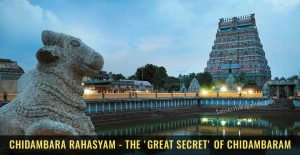
Pushpadanta (chief of the Gandharvas) and Mahimnastava / śivamahimnastotram
Pushpadanta was a great devotee of Lord Siva. He was the chief of the Gandharvas. His teeth were like the petals of the jasmine flower.

Pushpadanta was a great devotee of Lord Siva. He was the chief of the Gandharvas. His teeth were like the petals of the jasmine flower.

Yudhishtar was in his palace, when a guard came trembling with shock and fear. Yudhishtar composed himself and spoke sharply, ‘What is it my man?

Now, what is here in this City Chidambaram of Brahma (the body) is an abode, a small lotus flower (the heart) within that is the

Lecture by Srila Prabhupada, Bombay 30.09.1973 Philosophy without religious conception is mental speculation People are searching after Isvara, “Can you show me God?” “There is

The parallel between the arts and culture of India and those of the Americas are so numerous and close that it is not possible to

Asansol (West Bengal): After continued violence and clashes during Ram Navami celebrations in West Bengal’s Asansol, Section 144 has been imposed in the area. Meanwhile,

Chhath Puja is one of the most revered festivals, especially in Bihar, Jharkhand, and Uttar

As the festival of lights approaches, the excitement for Diwali grows. Celebrated across India and

Learn about the significance and rituals of Navratri Day 9, dedicated to Goddess Siddhidatri, who grants all supernatural powers. Discover her mantra, spiritual significance, and how to worship her for fulfillment.

Discover the significance of Navratri Day 8 as we honor Goddess Mahagauri, the symbol of purity and serenity. Learn about the rituals, mantra, and offerings for this special day of Navratri 2024.

Explore the significance and rituals of Navratri Day 7 dedicated to Goddess Kalaratri, the fierce form of Durga. Discover her connection to the Sahasrara Chakra, her mantra, offerings, and more.

Sanskriti comes from the Sanskrit root “kr” which means to do or to make prefix “sam” is applied before it to convey a sense of embellishment. It means actions done for the holistic refinement and perfection all the potentialities within a human being.
“The term “Rishi” in Sanskrit originates from a root that means “To See.” Rishis, quite literally, “see” truths that are unveiled to them in elevated states of consciousness. .These are recorded in Sacred texts called Upanishads , Vedas etc. The wisdom imparted by ancient Rishis has not only enriched the realm of inner science but has also played a pivotal role in shaping and advancing modern scientific understanding. Let us Explore……
Copyright © 2024. Sanskriti Magazine
Copyright © 2024. All rights reserved.